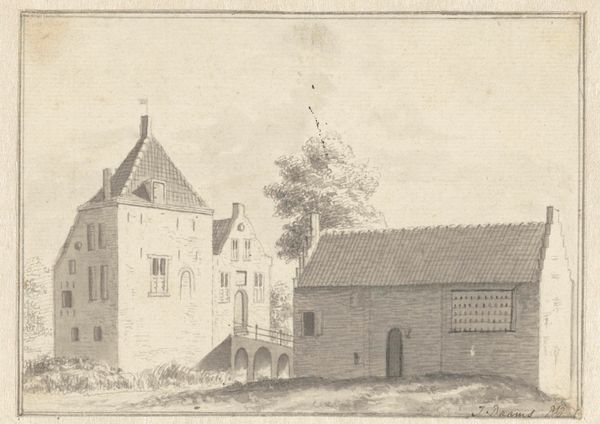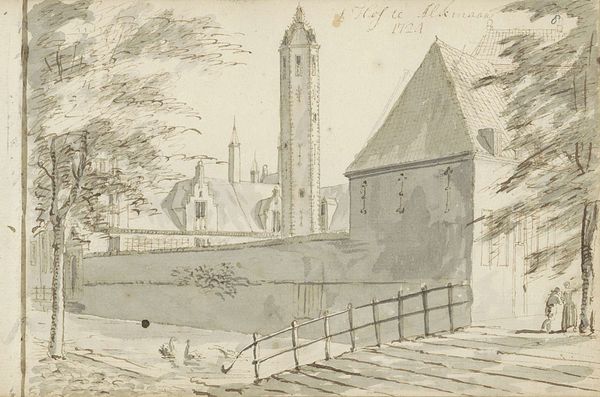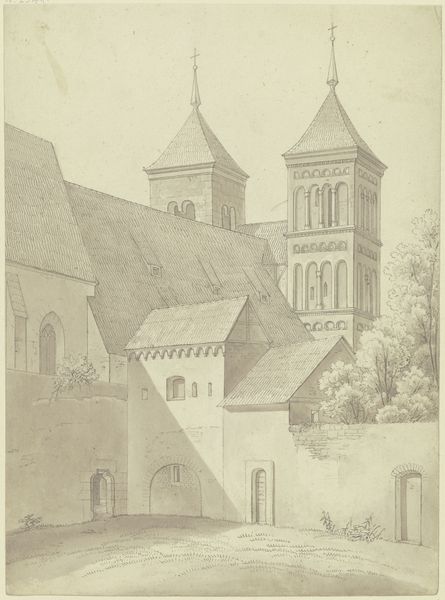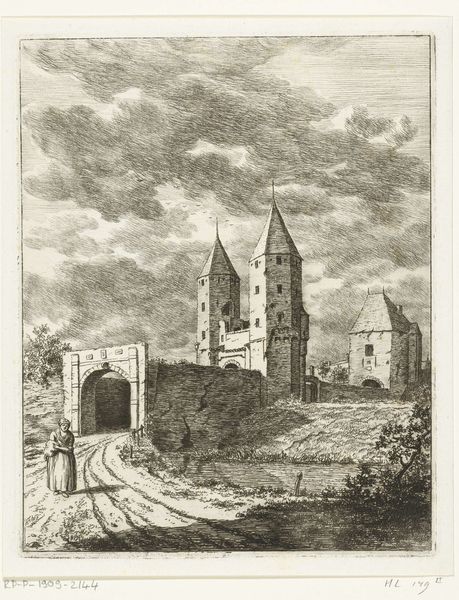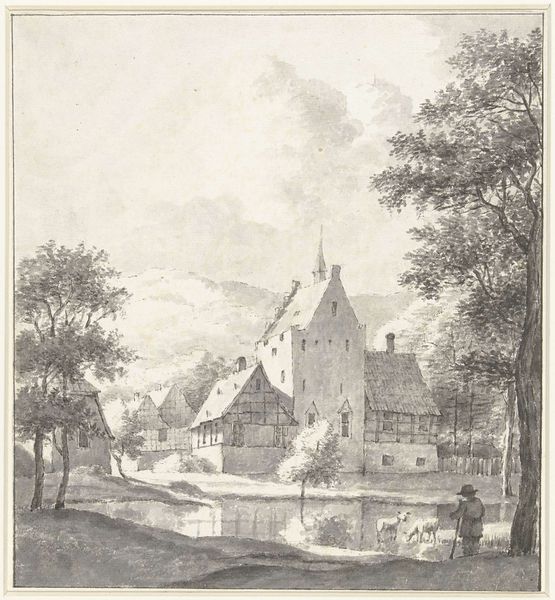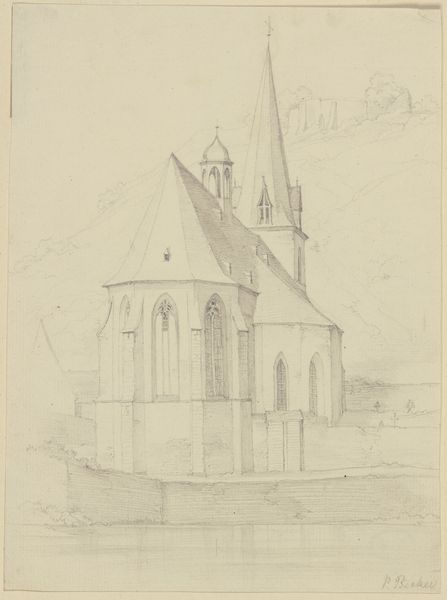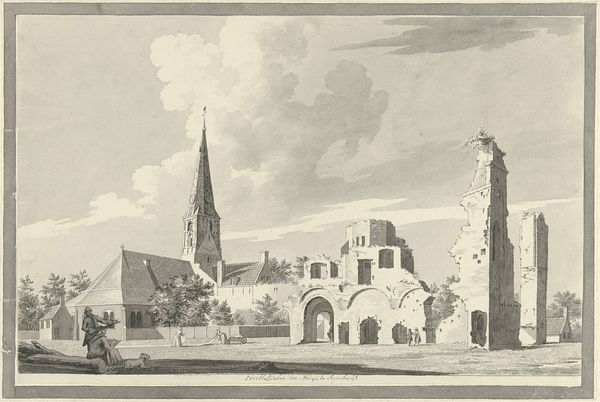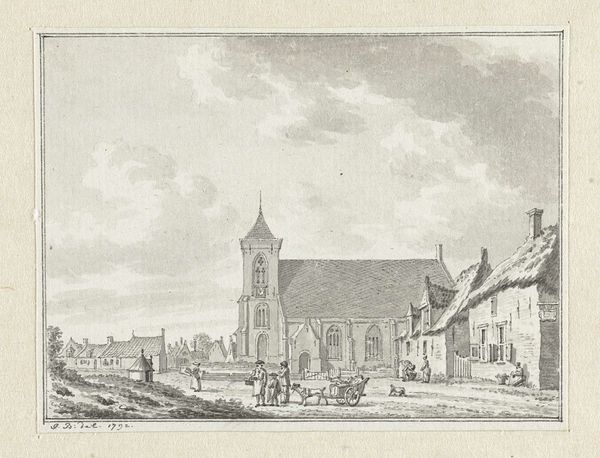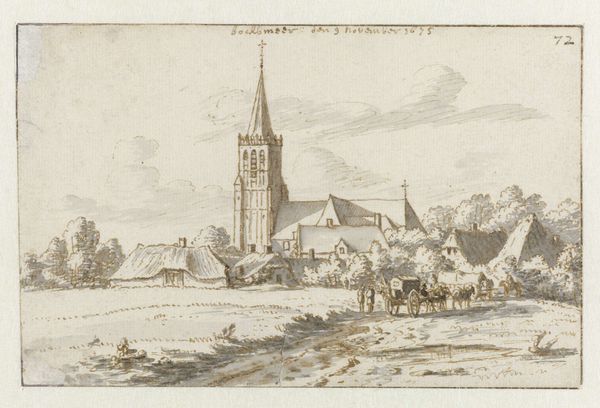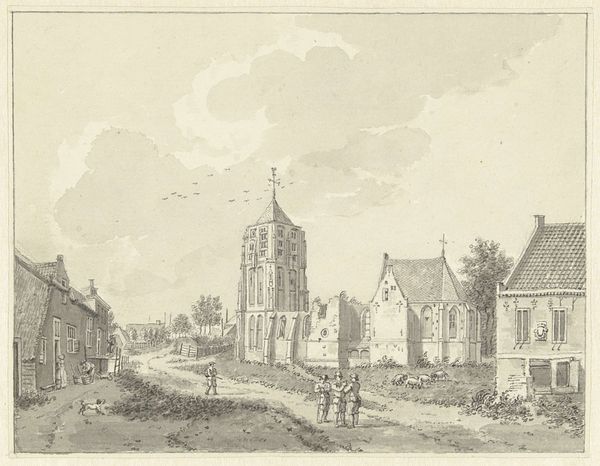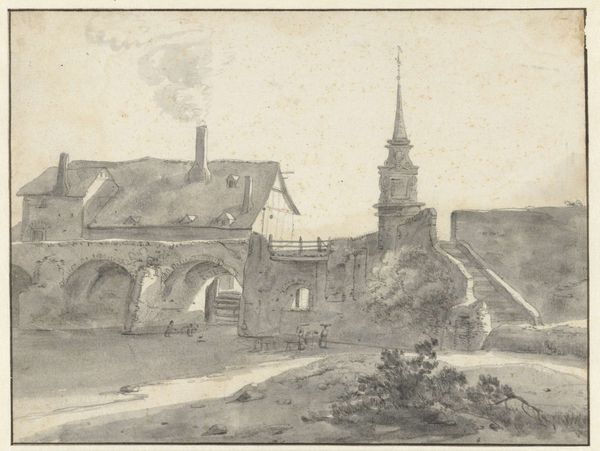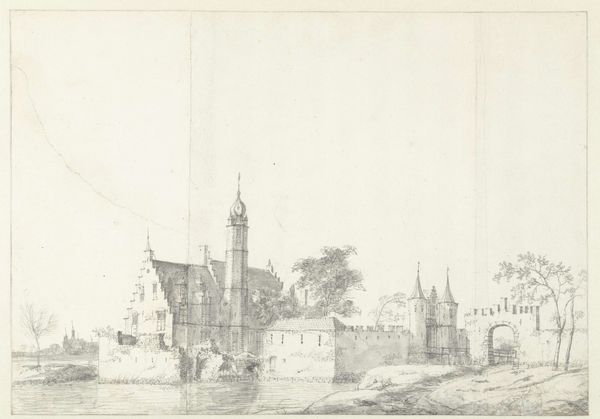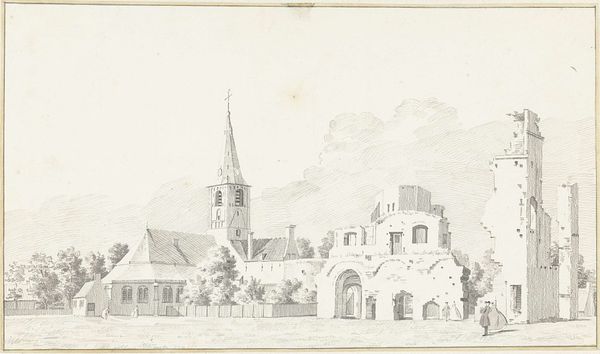
drawing, pencil
#
drawing
#
dutch-golden-age
#
pencil sketch
#
landscape
#
pencil
#
cityscape
#
realism
Dimensions: height 385 mm, width 299 mm
Copyright: Rijks Museum: Open Domain
Curator: This drawing, created sometime between 1786 and 1850, is entitled "De Slijkpoort en L. Vrouwentoren te Amersfoort" by Gerrit Lamberts. Editor: It's captivating. The delicate pencil strokes give it this ethereal, almost dreamlike quality, even though it depicts a sturdy, solid cityscape. There is something both formidable and fragile about this piece. Curator: Lamberts’s choice of rendering the scene in pencil aligns with the Dutch Golden Age tradition, a period marked by an interest in representing daily life with precision and naturalism. Notice how he uses shading to create depth and dimension. Editor: Absolutely, the sharp contrast highlights the gate's architectural form, drawing attention to the interplay between structure and environment, especially considering the lone figure leaning on the bridge. Are they contemplating something, perhaps their place within a rapidly changing world? Curator: That's a keen observation. The gate itself represents a threshold, a boundary between the familiar and the unknown. Lamberts lived during a period of political and social upheaval, influenced by the Enlightenment and the rise of republican ideals. It would not be a reach to see this drawing as a quiet reflection on power structures during those times. Editor: Or a romantic longing for a past order. But doesn’t that tower loom a bit too large? It reminds me how power, be it religious or civic, often dominates the landscape—and our lives, dwarfing individual experiences, but there is beauty too, as its gothic design and scale provide architectural prowess that draws in the human eye. Curator: That brings a very valid point on architectural monumentality, though the artist presents a serene moment within a specific historical context. We see a town undergoing change yet still clinging to elements of its past. Editor: For me, it evokes complex tensions, especially about continuity and rupture. Its seemingly placid image conceals simmering cultural, class and power dynamics—and invites reflection on whose stories and which versions of the past get memorialized in art and architecture. Curator: Indeed, this piece exemplifies how an artist’s choice in subject and medium can provide an opening for contemplating the social and historical landscape of their era. Editor: So it’s really more than just an illustration of the Slijkpoort; it is a mirror reflecting societal power at play.
Comments
No comments
Be the first to comment and join the conversation on the ultimate creative platform.
